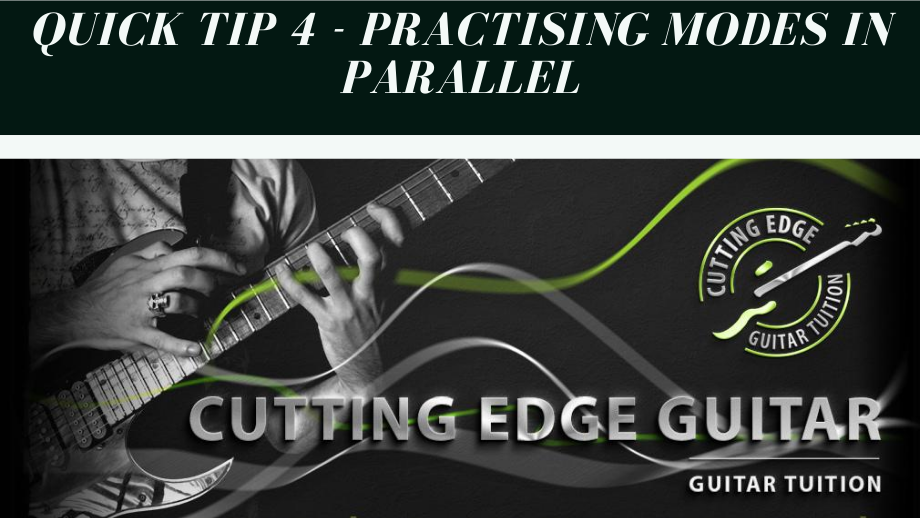Practising scales on the guitar is a tricky thing at the best of times. Many guitar players who are getting into lead guitar are aware that they need to learn their scales, but they're not always sure about what are the most effective ways to practice them. In this Quick tip lesson, I'm going to show you one way that is good for helping you learn scale shapes, interval relationships and most importantly, the sound of different scales all in one hit.
You can use this method with pretty much any scale, but for this lesson, we're going to do it with modes of the major scale. The first crucial thing you need to get down is what are the interval formulas for each mode. You can see this in the list below.
- Ionian mode - 1 2 3 4 5 6 7
- Dorian mode - 1 2 b3 4 5 6 b7
- Phrygian mode - 1 b2 b3 4 5 b6 b7
- Lydian mode - 1 2 3 #4 5 6 7
- Mixolydian mode - 1 2 3 4 5 6 b7
- Aeolian mode - 1 2 b3 4 5 b6 b7
- Locrian mode - 1 b2 b3 4 b5 b6 b7
Once you know the formulas for each mode, you need to see how this translates to the guitar neck. Again, for this lesson, I am going to use three notes per string, but there are plenty more ways to view these scales on the fretboard. The diagram below shows each scale played from the same A root note.
Once you have the shapes under your fingerings, the next thing to do is start playing these scales over a drone track. A drone track is a backing that consists of a static root note, no specific chords so that you can practice playing chords and scales against one static root note. I have a drone track in the key of A up on my youtube channel if you need one.
When I get my students to practice this exercise, I have them play up and down each scale twice, or four times each before moving on to the next. The only thing you need to do to make this exercise metronomic is only play two notes on the top string, rather than the usual three. Here's a breakdown of exactly how you want to practice the exercise.
- First cue up the drone track you are going to play on. This exercise can be done in any key, and I advise doing it in all 12 keys to train your ear and fretboard knowledge. You can find drones in all 12 keys in my E-store.
- Play up and down each scale a minimum of two times, and up to four times, depending on your stamina and technical ability. Remember only to use two notes on the top string to make it metronomic.
- You can play this exercise in either 8th notes or 16th notes, depending on your technical ability.
- When you are learning the fingerings for the shapes make sure you get to grips with which notes (intervals) are changing from mode to mode, this will be beneficial when you are specifically looking to target notes in solos.
- Playing the scales like this in a parallel fashion over a drone track is good for your ear. Make sure you are listening to the sound of each mode. Internalise that sound so that when you are improvising, you can call up these sounds on the fly.
The instructions in the lesson give you the basic outline of how to practise scales in parallel, for further explanation on this watch the supporting video.
